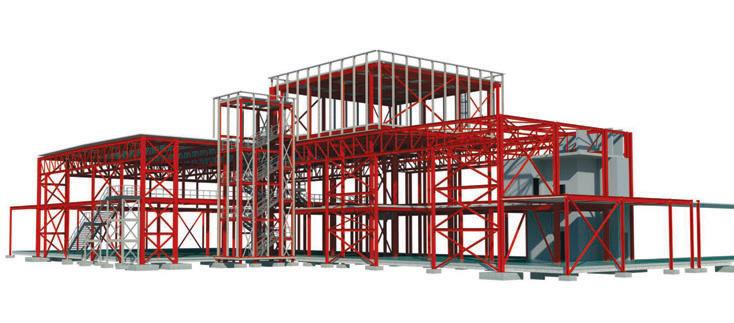Case study
Regenerating London King’s Cross Architectural practice John McAslan + Partners relied on MicroStation to develop this iconic station redevelopment that melds a Grade 1 listed building with state-of-the-art design.
B
uilt in 1852, King’s Cross rail- Cliff Green, project technology manager construction, reusing existing structures way station is one of the main at John McAslan + Partners. “The way the and restoring historic building elements, transportation hubs in London. station connects with the city and sup- including the train shed and the station’s As with the rest of the United ports the urban regeneration project is previously obscured historic façade. Given the number of organisations Kingdom’s rail network infrastructure, hugely complex.” For a project of this size and complexi- involved in this complex project, from the station has struggled in recent years to manage increasing passenger numbers ty, architects John McAslan + Partners design through fabrication and construcand to provide the space and amenities needed equally sophisticated models and tion, it was essential to enable efficient modelling tools. MicroStation’s federated collaboration and information sharing. commuters expect. The £547 million redevelopment of model structure allowed the large design MicroStation’s federated model structure King’s Cross station is at the heart of one team to share common files between mul- ensured everyone on this large design team had access to highof the largest regeneraquality, consistent, valition projects in Europe, dated data. with 67 acres of brownWe can work in large teams and use 2D, 3D, and The collaborative profield land being redevelcess enabled the project oped to create eight milBIM to suit the state of the project, the type of team to avoid disruption lion square feet of officproject, and the skills of our team. The flexibility to London Underground es, retail space and passengers and allowed housing. of MicroStation offers a real advantage Network Rail to meet its This complex urban promise to TfL that no regeneration project mainline train service faced many technical challenges, including the potential impact tiple disciplines. Using Bentley tools they would be cancelled due to redevelopment. “With so much information to share on the mainline station, a number of were able to merge and organise numerunderground transport connections, and ous elements of the project including her- with so many different parties, the speed the nearby St Pancras International rail- itage and conservation work on current and effectiveness of information capture way station. The redevelopment also had structures, as well as existing services and collaboration was a key aspect of this project,” Mr Green said. to maintain the historic Grade 1 listed and transportation infrastructure. building, which required continual veri3D modelling fication from English Heritage and other Remaking a London icon statutory bodies. The King’s Cross redevelopment project The western concourse semi-circle “King’s Cross station is not just a build- is operated by Network Rail and spon- diagrid roof, which rises 20 metres and ing; it is a major transportation node in a sored by the Department for Transport. spans 150 metres, involved engineering highly sensitive part of the city,” explains The project required a new design and and co-ordination challenges.
‘‘
’’
26
May / June 2014
p26_27_AEC_MAYJUNE14_Bentley.indd 26
www.AECmag.com
20/5/14 12:13:49








